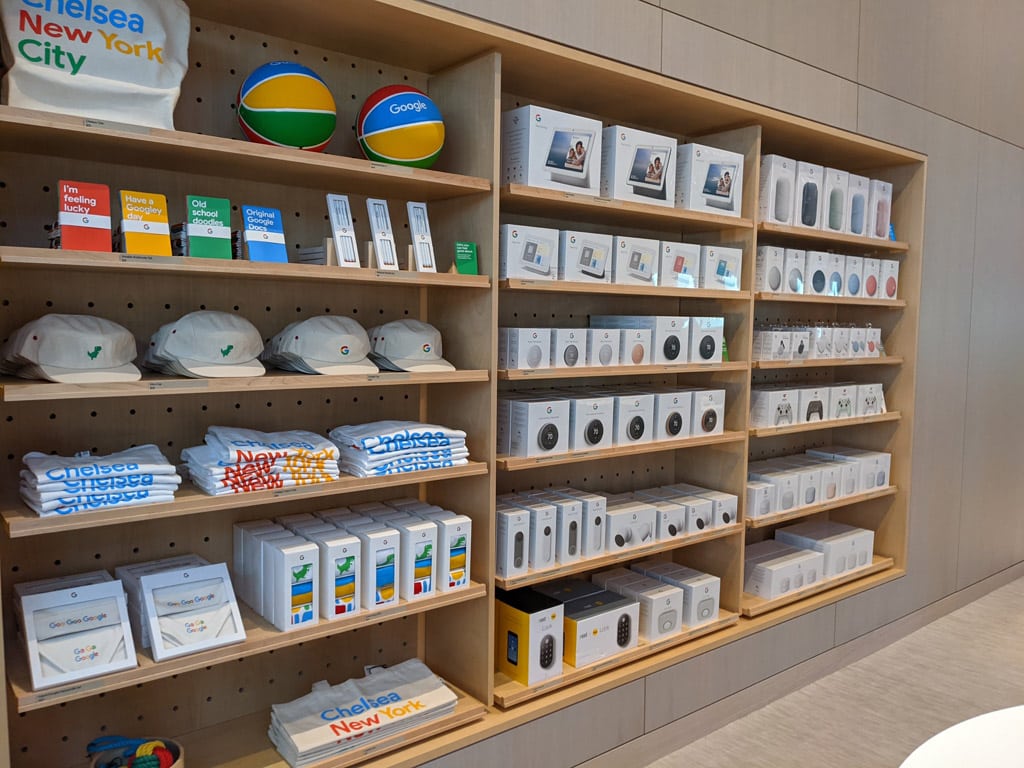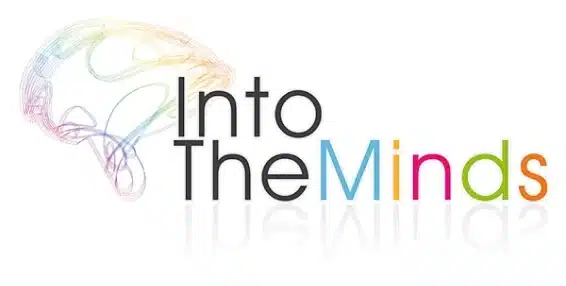Marketing mix : physical environment
In the 7P marketing mix model, the physical environment (also called “physical evidence”) materializes the company’s marketing positioning. It makes it tangible in the eyes of the customer. Describing this physical environment is a crucial part of the marketing mix in the retail sector. This chapter of our guide details 7 dimensions that can be interesting to study.
For a general overview of the history and development of the marketing mix, go to our guide.
Marketing mix: the physical environment
Facilities (furniture, equipment, access)
Questions to ask: How does the sales outlet equipment help convey the brand’s positioning? Is there something special about the furniture that makes it unique or distinctive? Is there something special about the access to the store or company? Does it mean something in terms of the company’s positioning or values?
Examples: The furniture in Google’s flagship store in New York is distinctive because it allows visitors to sit and test devices. It is relatively similar to that of the Apple Stores.
Le Pain Quotidien’s table d’hôte is a standout feature of the brand. Its positioning shines through in this iconic piece of furniture that encourages interaction and promotes conviviality.

Credits: Yuichi Sakuraba via Flickr

Space planning (functionality, efficiency)
Questions to ask: Is the space design of the sales outlet outstanding? Does it contribute to the customer experience, and if so, how? In the case of an online business model, does the website present remarkable aspects, for example, in terms of ergonomics? How does the spatial (or online for websites) organization contribute to efficiency?
Examples: Apple has revolutionized the layout of sales outlets thanks to “low” furniture that clears the space and simplifies reading. While traditional retailers “partition” their areas, Apple has broken the codes and partitions. The customer can now understand more easily the layout of the sales space, which simplifies the circulation.
Many other brands now imitate this approach. For example, during our visit to Google’s flagship store in New York, we could see that the same principle was applied.
This quest for spatial ergonomics also has repercussions in the virtual world. Websites are increasingly looking for efficiency, which leads to clean interfaces and to make them more readable.
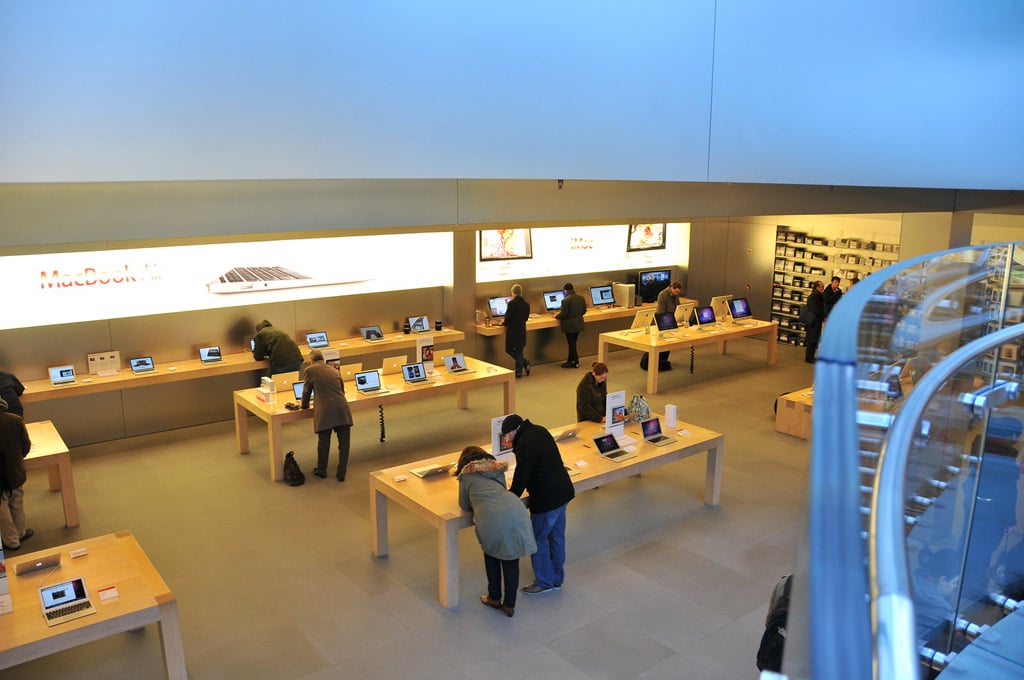
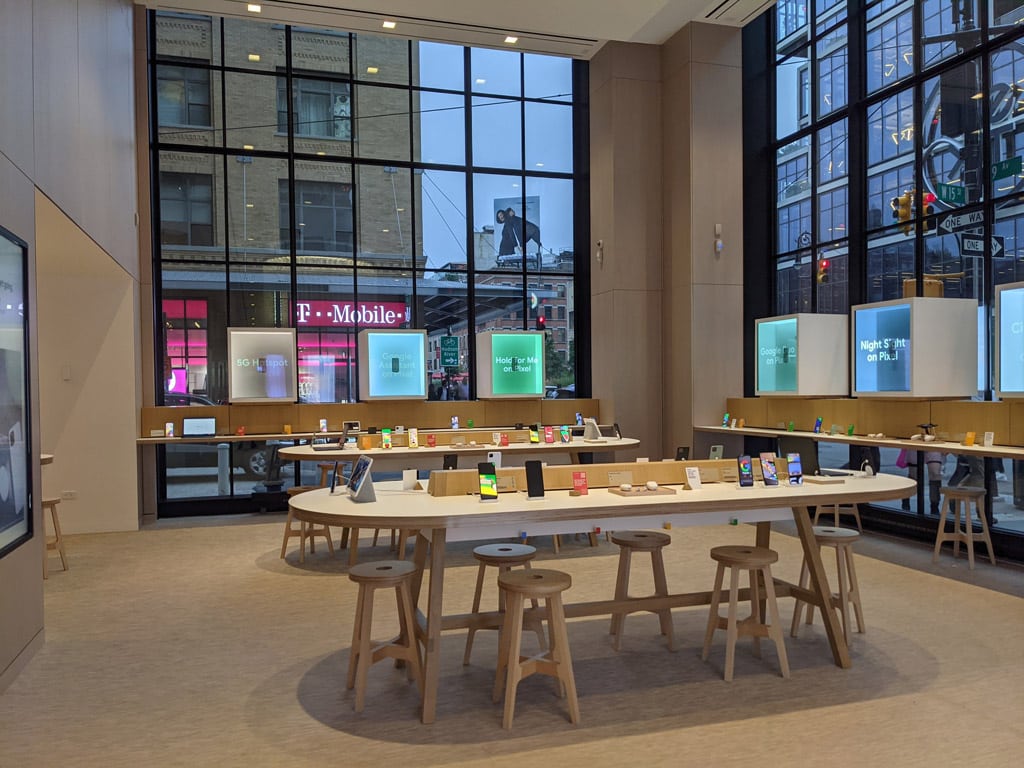
Signalization (directions, symbols, flow management)
Questions to ask: How is the circulation inside the sales outlet simplified? Does the brand prioritize efficiency in the buying process, or, on the contrary, does it try to expose the customer to as many products as possible to make him buy?
Examples: The circulation inside IKEA stores is a textbook case. An imposed route “forces” customers to go through the different spaces. This imposed route is often debated, and it is regularly discussed to remove it because it is a source of frustration and dissatisfaction from customers looking for efficiency.
Amazon’s website is another model of its kind. The website looks like those “Christmas tree” websites of the 2000s that were bulimic with information. The homepage is not sober, and the Internet user is overwhelmed with proposals. Yet, it works. Amazon’s website is a real conversion machine in which its recommendation algorithm is responsible for about 35% of sales.
The Lego store in London presents a compelling use case for managing queues at checkouts. A flow management system has been set up that is adapted to children. This way, the little ones can succumb to their impulses and increase the average basket just before their parents go to the checkout.
A brand like Fauchon (delicatessen) capitalizes on a specific color (fuchsia) to be identified in the consumer’s mind. This is the same color that identifies another luxury brand in the same sector: Wittamer.
Color can become an iconic color, as in the case of Hermès (orange). It then goes beyond the strict framework of packaging and logo to become part of product design.
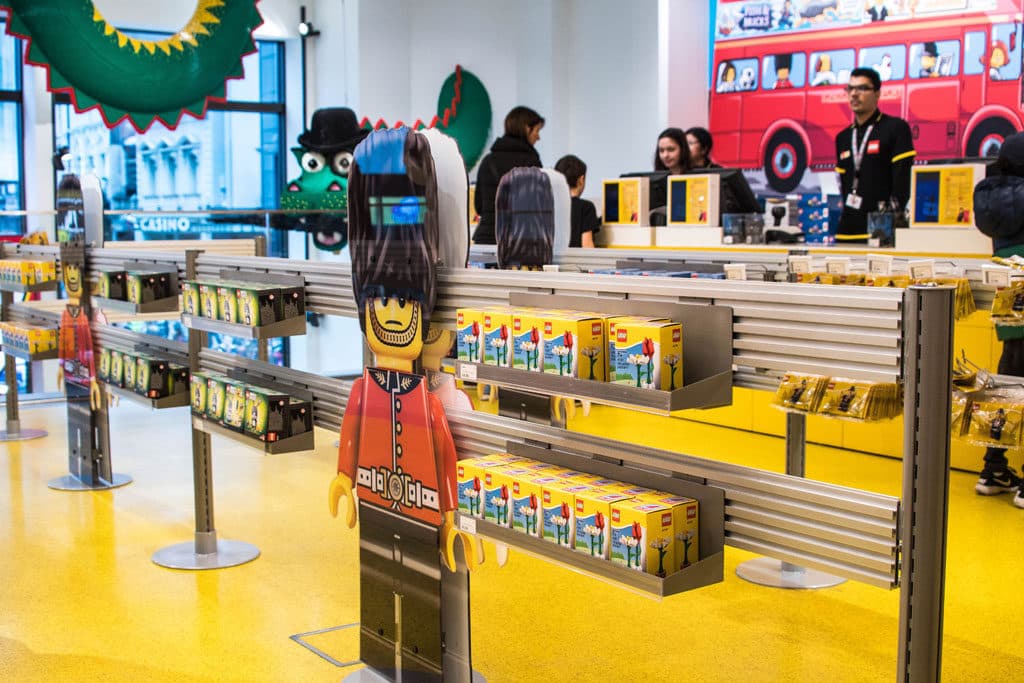
Interior design (furniture, graphic design)
Questions to ask: How would you describe the design of the sales outlet? Are there particular colors used? Is the furniture design specific? How does interior design contribute to the customer experience? In the case of an online business, is the design remarkable? Is it different from the design of competing websites? Is its graphic charter particular?
Examples: The coworking sector has seen a plethora of offers in recent years. Consequently, some players in this sector have sought to differentiate themselves, mainly through their interior design. Fosbury & Sons, for example, proposes coworking spaces that are equipped with furniture signed by the most prominent names. You could easily find the workspaces in the pages of a fashion or architecture magazine because they are so beautiful.
The ambiance of Abercrombie & Fitch stores is influenced by the dark colors used in the interior design. The sales outlets resemble a nightclub.
In addition to a retro atmosphere emphasized by acidic colors, the children’s clothing brand Bonpoint also proposes specific furniture. In one of its Parisian stores, we noticed a children’s hut with a deliciously vintage look.

Ambiance (noise, air, temperature, smell)
Questions to ask: In the case of a physical sales outlet, is the customer immersed in a particular sound environment? Is his olfactory sense mobilized in any way? Is there anything special about the temperature of the sales outlet?
Examples: The effect of the store’s ambient conditions on buying behavior has been studied for a long time. Some brands have made it their “trademark.” The sensory atmosphere of a sales outlet can be an essential contribution to the customer experience, as illustrated by the case of the clothing brand Abercrombie & Fitch. All the senses are awakened: the music gives the impression of being in a discotheque, and the perfume diffused in the sales outlet is also diffused outside.
Nature et Découvertes stores are known for their soothing sound ambiance, in line with the brand’s positioning. Birds singing and water flowing evoke nature and connect the customer to the products proposed.
The Globetrotter store in Cologne (Germany) is entirely dedicated to sports activities, specifically to those that take place outdoors. A pool has been built in the center of the store, which allows customers to test water products, especially canoes. Therefore, the atmosphere (sound, humidity) is “aquatic” and immerses the customer in the heart of Globetrotter. This is an essential element of their marketing mix.
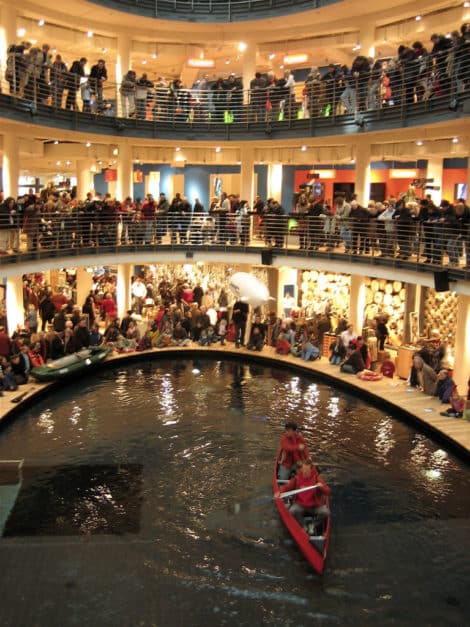
Credits: Brian Chiu via Flickr
Design of accessories (work clothes, brochures, menus)
Questions to ask: Do collateral items (staff clothing, brochure, menu) follow a particular graphic design or code? What do the colors used evoke? Is there anything special about the style used?
Examples: Luxury brands are conscientious about aligning their perceived value with the elements surrounding it. In this industry, customer-facing employees are often dressed in the clothing of the brand they represent. In addition to the promotional aspects, this also ensures no dissymmetry between the customers’ perception and the brand’s image. The perception of luxury brands remains a complex subject, especially when social distance comes into play.
Apple follows a different strategy. Apple’s blue (or red) shirts are the employees advising customers in the sales outlet. This attribute clearly identifies employees and distinguishes them from customers.
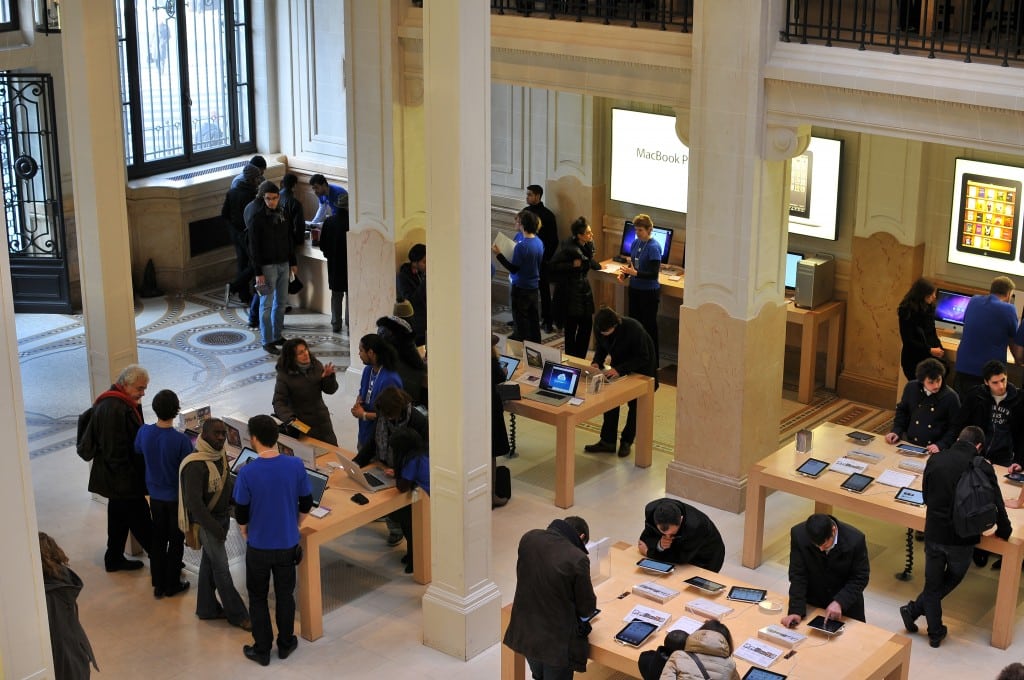
Artifacts (souvenirs, by-products)
Questions to ask: Does the brand propose derivative items? What type of merchandise? What is their function? Where are these objects and souvenirs sold?
Examples: Football clubs, and in general all sports clubs, propose accessories with their effigy. Their sale allows to perpetuate the memory of the club and to maintain the flame of the supporter (i.e., his loyalty).
Derivative objects and souvenirs are not limited to the tourism or sports sector. During our visit to the Google flagship store, we noticed that many “goodies” bearing the image of Google were sold there. A brand outside the world of sports can also have its followers or apostles. For some consumers, technology is like a religion. Apple enthusiasts, for example, will show their attachment to the brand through various objects.
